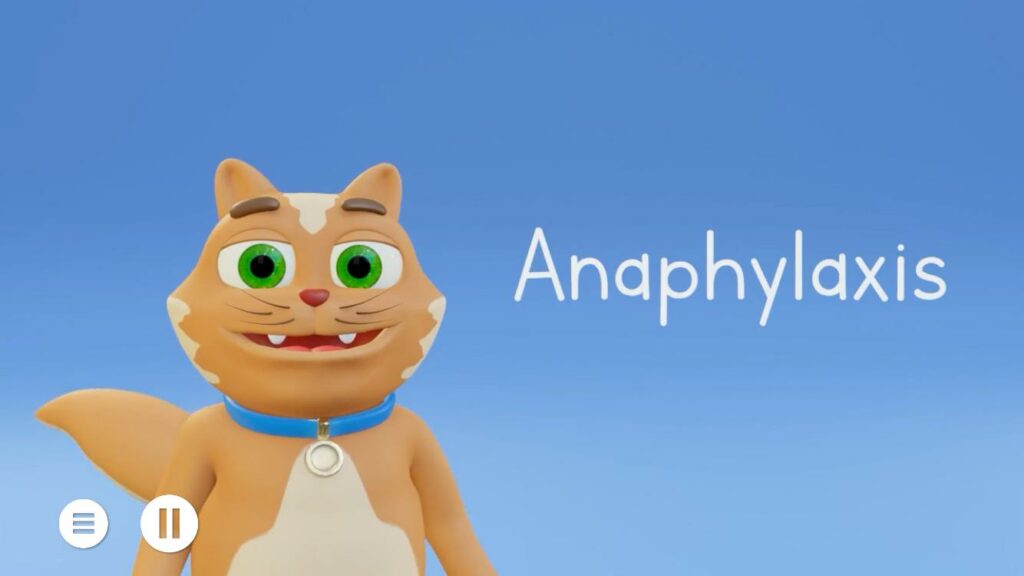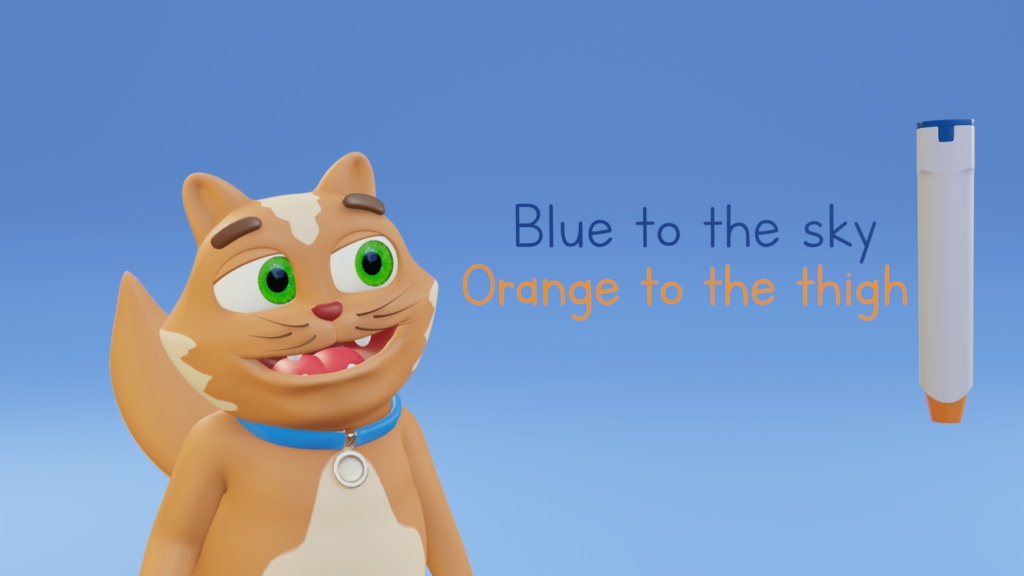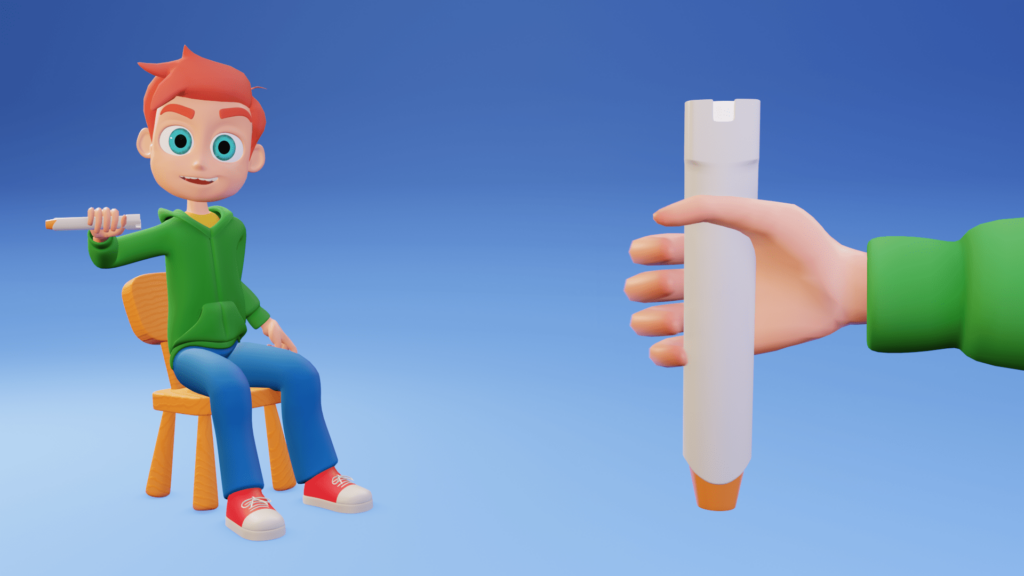Executive Summary:
Patient-centric approaches to conveying health information can provide patients with the knowledge and the confidence that they require to manage allergic emergencies and prevent further medical complications. For such an approach to be effective, the information being provided must be accessible, engaging and understood by the target audience. Digital approaches to healthcare information dissemination provide a great deal of flexibility in this regard as the mode and form of communication can be freely manipulated, allowing for information to be tailored accordingly for the receiving audience and improve health literacy as a result. This could encompass the use of animations, audio guides, interactive videos and virtual reality provisions.
The use of digital formats for dissemination of healthcare information can also help patients, parents and carers circumvent contemporary social challenges. The covid-19 pandemic, for instance, has disrupted healthcare systems significantly1 and vulnerable patients may not be advised to attend a clinic. With digitised methods, there is an ability to remotely convey information that is conventionally only accessed within a clinical setting. Furthermore, remote provisions for healthcare information can help healthcare professionals and patients navigate logistical inconveniences such as travel. This in turn may potentially aid in improving the efficiency of healthcare systems through providing healthcare professionals with more time to pursue other clinical tasks.
View the full whitepaper here

Fizzmo the Cat virtual avatar as presented via the Healthinote app. Fizzmo was designed with the target audience in mind, intended to be a fun and engaging character to bring the subject area to life.
This whitepaper will present:
- the importance of ensuring that pivotal healthcare information is accessible, age-appropriate, easily understood and retained by school-aged children.
- key outputs from a study jointly developed and managed by Cognitant, Cardiff University and the Children’s Hospital for Wales, where an interactive video was created to instruct school-aged children on how to use an adrenaline autoinjector.
Introduction
Allergies and, in its acute form, anaphylaxis, are a great burden for many patients as these reactions can have a significant impact on health and overall quality of life.2 In an emergency, patients must be proficient in the use of their adrenaline autoinjector. Health literacy needs within an allergy management context has been highlighted by evidence of patients not having sufficient knowledge on how to use an adrenaline autoinjector as prescribed.3,4 This lack of pivotal knowledge could produce fatal consequence for patients and highlights the need for healthcare information that is accessible and understandable. Within the UK specifically, an estimated 350,000 individuals were recorded as carrying an adrenaline autoinjector in 2020.5 Where paediatric care is concerned, the largest number of hospitalisations due to anaphylaxis triggered by food allergies was observed in children who were under the age of 15 (1998-2018, UK).6 It is also important to note that within the UK, between 5-8% of children have a food allergy,5 and 17% of fatal reactions experienced by school-age children take place on the school premises.7
Whilst all children with a food allergy may not be susceptible to anaphylaxis, such demographic data provides reference values that may indicate the potential scale of the risk, and the environments where pertinent healthcare information could be concentrated. Overall, the data references display a sizeable portion of the UK population that could benefit from access to optimised instructional material for adrenaline autoinjector use.
Health literacy is crucial for positive outcomes
Data published in 2020 showed that 14.1% and 66.8% of English school-aged children had health literacy rated as low and moderate, respectively.8 This suggests that there is room for improvement in the ways in which health literacy is approached in the UK.
Insufficient health literacy may result in poor health outcomes.9 Consequently, healthcare information needs to be packaged in a way where the target audience’s literacy needs are catered for to reduce the risk of poor health outcomes. In order to ensure that positive health outcomes are achieved where allergy and anaphylaxis management is concerned, it is imperative that both children and parents/carers alike are sufficiently equipped with the right information. This means creating healthcare information that is accessible, relatable and therefore impactful. Such determinants of success are particularly impactful within a paediatric context when considering:
Attention span: children generally have shorter spans than adults.10c Additionally, there is evidence which suggests that children may apply their attention in a way that is less focused, meaning that they could be more prone to taking in as much information as possible, as opposed to strategically filtering it.11 With this in mind, healthcare communication with this audience must be engaging and succinct.
Mode of communication: animations in the form of cartoons are one of the most common forms of media consumed by children; as such, animations may be an appropriate way to make healthcare information more relatable for them. Animations have been shown to positively influence health-related choices that children make,12 and may also benefit their general cognitive development13
Cognitant’s approach: Fizzmo the cat
Attention span and the mode of communication were identified as key factors in this study and addressed accordingly to make healthcare information more palatable for children. An interactive video starring a virtual avatar called “Fizzmo the Cat” was developed as part of an EpiPen® or EpiPen® Jr (adrenaline) training module within the Healthinote native app platform for children aged between 5 and 12 years of age. The 3-minute video educated users on the importance of using their EpiPen rapidly, when needed, and walked through all of the steps required to administer it correctly, from the injection itself to calling an ambulance. Users were able to interact with the video and ‘communicate’ with Fizzmo the Cat as he guided them through the steps required for emergency self-injection. Branching throughout the video allowed users to return to information if they needed to, encouraging them to learn at their own pace. In order to reduce the risk of poor health outcomes, healthcare information needs to be packaged in a way where the target audience’s literacy needs are catered for.

Users were able to interact with the video and ‘communicate with’ Fizzmo the Cat as he guided them through the steps required for self-injection. Users were able to return to information if they needed to, learning at their own pace.
This allowed children to:
1. Engage with healthcare information that was not text laden and easily digestible
2. Have healthcare information relayed to them through an animated avatar which they would find appealing
3. Actively engage with the avatar as prompted by on screen indicators to make for a more memorable experience

Health literacy is critical for positive outcomes
Testimonial from Dr David Tuthill, Consultant Paediatrician at the Children’s Hospital for Wales:
“We are really pleased with the results from this pilot study, as it showed that children can be taught how to use EpiPens® in a new way. They were also better able to remember to hold their EpiPen on the thigh for longer. We hope in the future that this novel way of delivering care will mean primary school children can be taught remotely about EpiPens®. “With anaphylaxis on the rise, sufficient child-friendly education into initial treatment for the condition is really needed. Being able to improve how children recall the information they are given is transformational.”
View the full whitepaper here
References
1. Moynihan R et al. Impact of COVID-19 pandemic on utilisation of healthcare services: a systematic review. BMJ Open 2021;11(3):e045343
2. Shaker MS et al. Anaphylaxis—a 2020 practice parameter update, systematic review, and Grading of Recommendations, Assessment, Development and Evaluation (GRADE) analysis. J Allergy Clin Immunol 2020;145(4):1082-123
3. Cohen MB et al. Pitfalls in the use of epinephrine for anaphylaxis: patient and provider opportunities for improvement. Int Forum Allergy Rhinol 2017;7(3):276-86
4. Egan M et al. Correct use of epinephrine autoinjectors in relation to health literacy in patients with food allergies. J Allergy Clin Immunol 2016;137(2):AB51
5. Anaphylaxis Campaign. Impact Report 2020. Available at: https://www.anaphylaxis.org.uk/2021/05/06/2020-impact-report/. Accessed April 2022
6. Conrado AB et al. Food anaphylaxis in the United Kingdom: analysis of national data, 1998-2018. BMJ 2021;372:n25
Cognitant
Looking to empower people with health information for better patient outcomes?
Related News
Kidney Research UK invests in Healthinote patient education platform which could support >15m people with long term health conditions
April, 2025
Oxford, January 2025 – Kidney Research UK, the leading charity dedicated to kidney health, has made a significant investment in Cognitant Group Ltd, a leading...
Webinar Insights – Compliance vs Patient Engagement: Can They Co-Exist?
April, 2025
Is compliance really a barrier to meaningful patient engagement in pharma, or are outdated myths holding us back? In this recent webinar, Dr Tim Ringrose,...
Funding awarded to innovations that support early diagnosis and rehabilitation of Stroke patients
March, 2025
SBRI Healthcare, an Accelerated Access Collaborative (AAC) initiative, in partnership with the Health Innovation Network, has awarded £2.5 million for the development of five innovations...